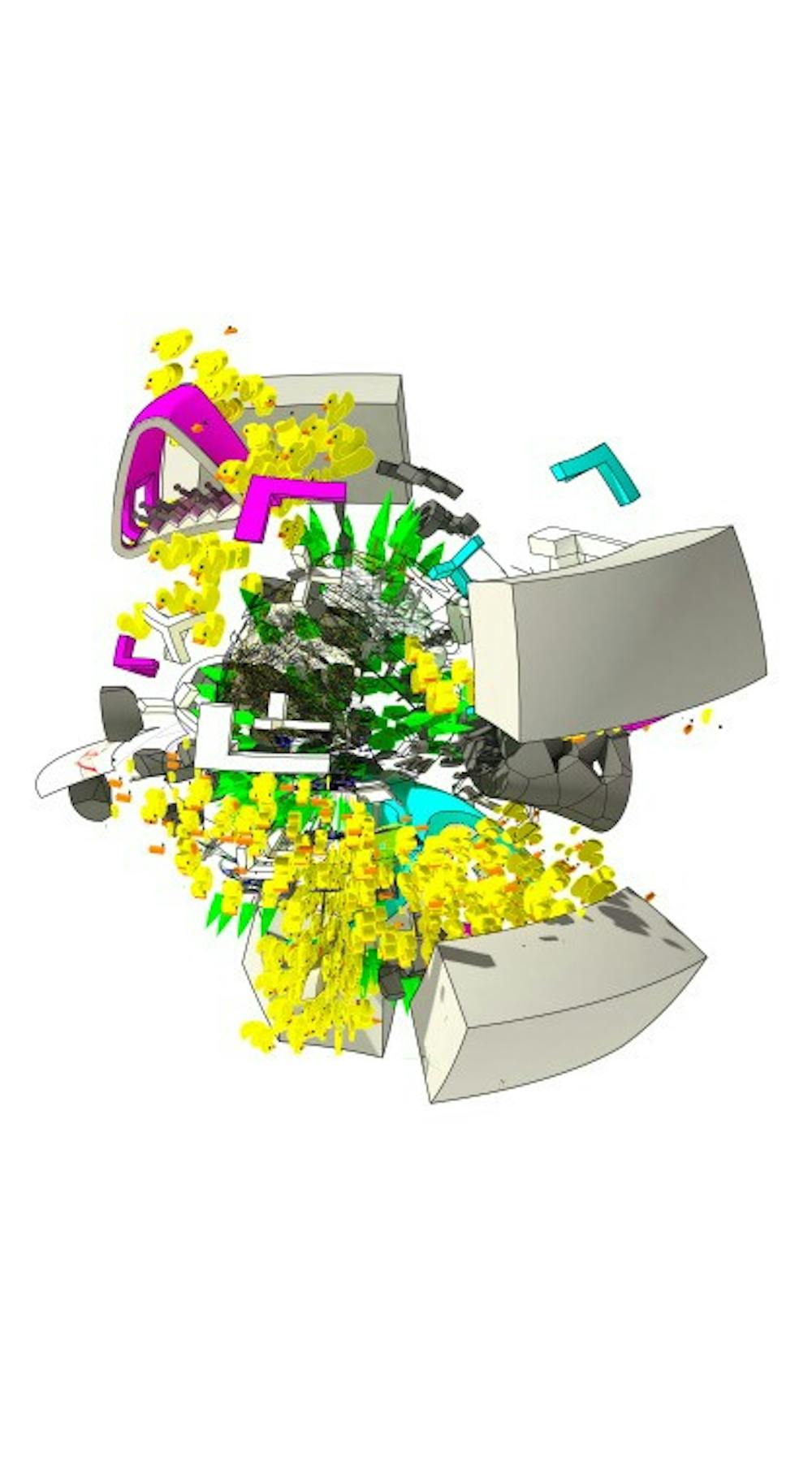Viewers approaching Eric Lawler’s exhibit Thursday at Muncie Makes Lab could have been easily overwhelmed by his display of rich colors filling geometric shapes and broken patterns.
Lawler presented his exhibit “Side Investigations” as part of Muncie’s First Thursday art gallery event where local and academic artists and art students present their work to a larger audience.
Lawler, a junior architecture student, wanted to present the intangible ideas and concepts that inspire physical architecture as graphic images open to the viewer’s interpretation.
“I was focusing on the side of architecture that doesn’t get built — the theories and concepts that aren’t actually built but still significantly contribute,” Lawler said. “It made me think of how much we take for granted as our built environments, and I thought, ‘What happens if we tweak that a little bit?’”
The exhibit, which contained about 100 images, looked right at home in Muncie Makes Lab, t-pinned to a scuffed and chipped cream-colored wall. Lawler’s images pulled the viewer into a graphic, pixelated world dotted with abstract holographs and stocked with broken surfaces, swirls cut by shadows and tenacious lines shaped by soft, rounded edges.
The images resembled everything from sea sponges to moon rocks and Legos to rubber ducks. Every move of the eye helped the figures reveal yet another new element. The neon- and gem-colored saturations brought even more spirit to the already-seemingly living, breathing, blood-pulsing glitches. Although mere two-dimensional images, they looked as though they could be pulled right up off of their textured paper backgrounds, forcing the viewer’s brain to surge wide awake and take notice.
Lawler decided to create an exhibit after a simple conversation in a studio art class. He developed the idea by exploring his own personal interests. Floorplans and cross-sections are used in the physical construction of buildings, but Lawler wanted to find his focus in the echo of that.
“I was thinking about how these images can be just as important as the finished result,” he said.
Although his images are intricate and complex, his creative process was surprisingly simple.
“I’d have an idea in the back of my head and just dwell on it. At the end, if it was interesting, I’d keep it,” Lawler said, noting the digital influence of modern technology. “You can’t hold or touch a text message, or a profile picture, or a cool image you saw, or some video that really inspired you. They exist purely as visual and audible information. Yet, they’re incredibly influential for us in so many ways.”
Lawler’s appreciation for the visionary underbelly of the concrete art and architecture world are what allow him to push forward, evolving his concepts into art and pursuing his architectural passion.
“There is power behind images. But the ideas behind them can be much more important,” he said.





